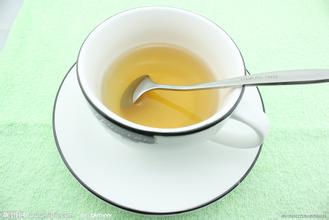Introduction to the Flavor description treatment method of Indonesian Coffee Raw Bean grading Standard
Introduction to the Flavor description treatment method of Indonesian Coffee Raw Bean grading Standard
The size of the international practice is 9: 22, and the number used represents the diameter of the screen, with this number as the numerator and 64 as the denominator, in inches. For example, 14 refers to raw coffee beans that can be sifted through a 14-inch screen with a diameter of 64 inches, and 19 + refers to raw coffee beans that can be sifted with a diameter of more than 64 inches with a 19-inch screen.
Grading standard and code name
The governments of each coffee-exporting country set their own grading standards and code names.
Common grading standards
Block transactions:
The proportion of bad beans
Bean size
Soybean grain hardness
Single coffee (specialty coffee):
Name of the farm where it is produced
Organic cultivation (organic)
Fair trade (fair trade)
African countries-Kenya kenya
PB: peaberry
AA Plus-plus
AA plus
AA: Screen 17 and 18
AB: screen 15 and 16
C
E
African countries-Ethiopia
300 grams of raw beans as the basis for calculation
1: 0-3 defects
2: 4-12
3: 13-25
4: 20-45
5: 46-100
6: 101-153
7: 154-340
8: over 340 = substandard
South America-Colombia
Maragogype: special trees Marago Rippi, elephant bean
Supremo: screen > 17
Excelso: screen 15-16.5
UGQ: Usual Good Quality: Screen 12-14
South America-Brazil
Type Defects (COB) (New York) (Le Havre)
2 4 6 8
2/3 8 9 12.5
3 12 13 17
3/4 19 21 23.5
4 26 30 30
4/5 36 45 58.5
5 46 60 87
5/6 64 123
6 86 158

Important Notice :
前街咖啡 FrontStreet Coffee has moved to new addredd:
FrontStreet Coffee Address: 315,Donghua East Road,GuangZhou
Tel:020 38364473
- Prev

Introduction to the method of describing the Flavor of Coffee in Lemon Manor in Nicaragua
Nicaraguan Coffee introduces Nicaragua as an economically backward agricultural country, one of the poorest countries in Central America, with a high unemployment rate and people living in poverty, while coffee is a pillar industry in Nicaragua, producing nearly 100,000 tons of coffee beans a year. Due to the poor economic foundation, the coffee industry is still relatively backward, and coffee farmers are also in a relatively poor state. Although Nicaragua is China and the United States
- Next

Introduction to the Grinding degree of the characteristic varieties of Rosa Coffee from Hope Manor in Colombia
Columbia Hope Manor has pedicels 0.5-1 mm long; bracts basally somewhat connate, dimorphic, of which 2 are broadly triangular, nearly equal in length and width, and the other 2 lanceolate, 2 times as long as wide, leaf-shaped; calyx tube tube, 2.5-3 mm long, calyx eaves truncated or 5-denticulate; Corolla white, length varies from variety to breed, generally 10-18 mm long, apically often 5-lobed, rarely 4-or 6-lobed, lobes often 5-lobed.
Related
- Does Rose Summer choose Blue, Green or Red? Detailed explanation of Rose Summer Coffee plots and Classification in Panamanian Jade Manor
- What is the difference between the origin, producing area, processing plant, cooperative and manor of coffee beans?
- How fine does the espresso powder fit? how to grind the espresso?
- Sca coffee roasting degree color card coffee roasting degree 8 roasting color values what do you mean?
- The practice of lattes: how to make lattes at home
- Introduction to Indonesian Fine Coffee beans-- Java Coffee producing area of Indonesian Arabica Coffee
- How much will the flavor of light and medium roasted rose summer be expressed? What baking level is rose summer suitable for?
- Introduction to the characteristics of washing, sun-drying or wet-planing coffee commonly used in Mantenin, Indonesia
- Price characteristics of Arabica Coffee Bean Starbucks introduction to Manning Coffee Bean Taste producing area Variety Manor
- What is the authentic Yega flavor? What are the flavor characteristics of the really excellent Yejasuffi coffee beans?

